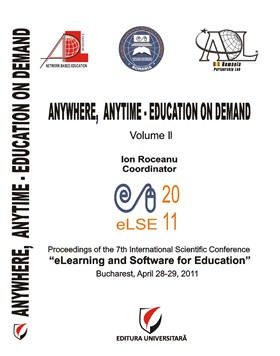TOP DOWN APPROACH TO APPLY LMS (EGYPT CASE STUDY)
TOP DOWN APPROACH TO APPLY LMS (EGYPT CASE STUDY)
Author(s): Ehab Eid, Mohamed Mostafa Mohamed, Medhat Alm El DenSubject(s): Education
Published by: Carol I National Defence University Publishing House
Keywords: learning management systems; Static Content; Content Management; e-Portfolio.
Summary/Abstract: The education industry has grown exponentially over the last decade. The educational services sector is comprised of establishments whose primary activity is education. This includes elementary schools, secondary schools, colleges, universities, business schools. The success of an e-learning initiative depends as much on the people and culture of the organization as it does on the technology used. · The early history of learning management systems, Around 1990, the first classroom training systems were introduced to the marketplace. These Training Management Systems were designed to manage classroom training only. The systems provided reports on who had completed training and what the costs of that training were. · In the mid-1990s, the first attempts were made at managing the relationship of jobs and skills. · By the year 2000, the first attempts at managing eLearning were introduced. Content could be launched over the Internet, but often that content was of low quality, and no attempt was made to differentiate learning styles. · The next generation of Learning Management Systems will enable or simulate a one-to-one student teacher learning environment via adaptive sequencing and navigation. Existing, standalone LMS generally lack the scalability, reliability, secured access to multiple resources via single sign-on and interfaces to provide these features. · Case Study the learning management system is going to apply by the ministry of education in Egypt.
Journal: Conference proceedings of »eLearning and Software for Education« (eLSE)
- Issue Year: 7/2011
- Issue No: 02
- Page Range: 291-296
- Page Count: 6
- Language: English

